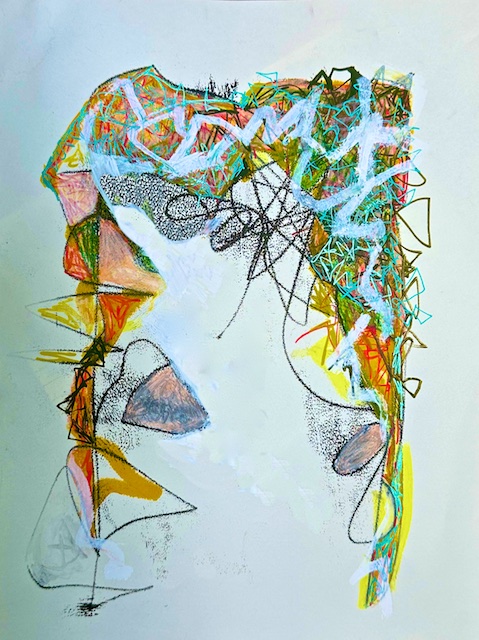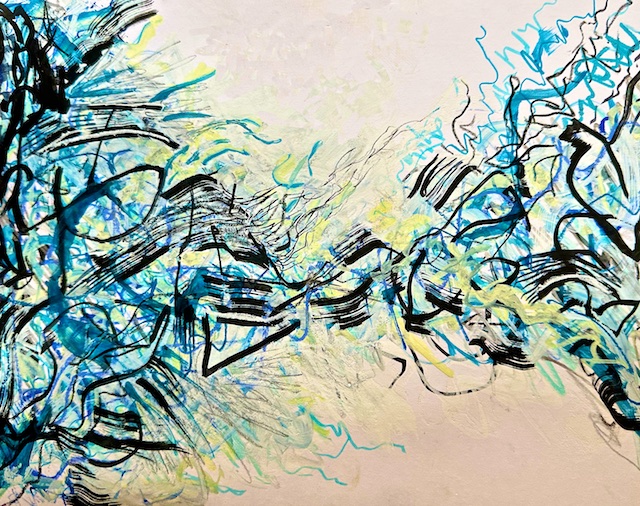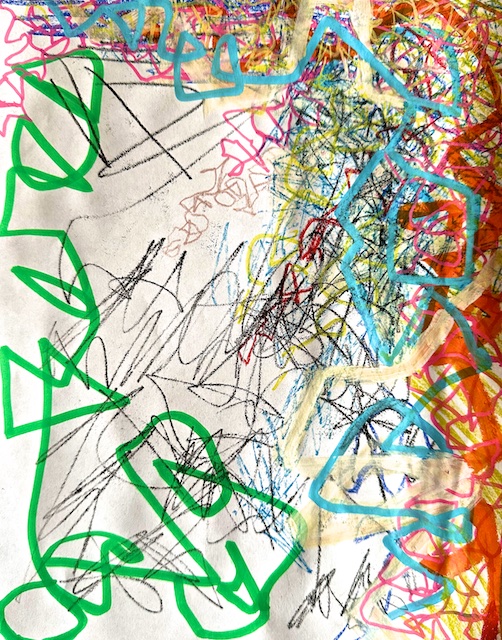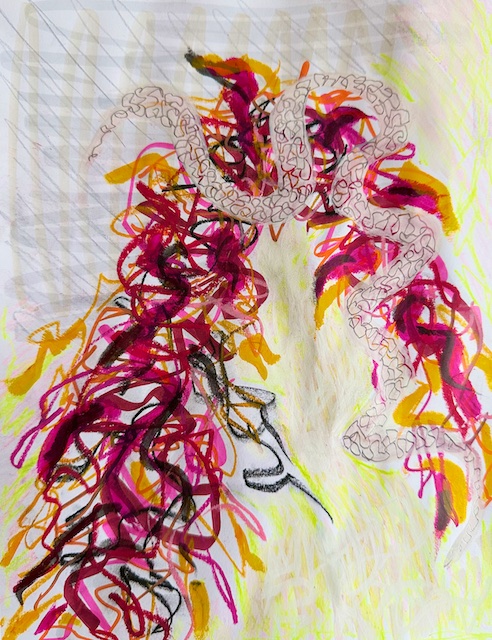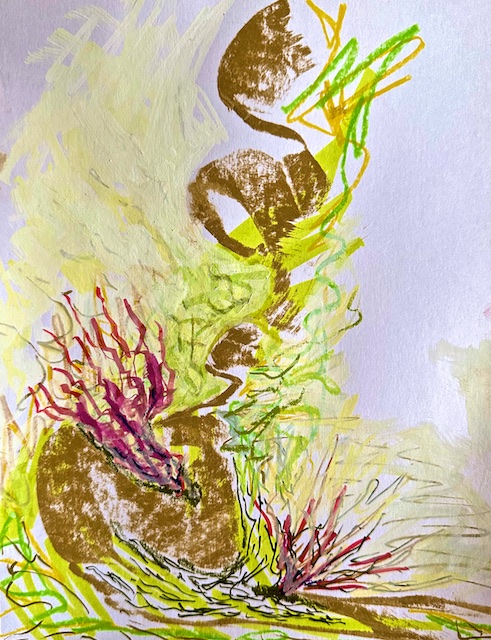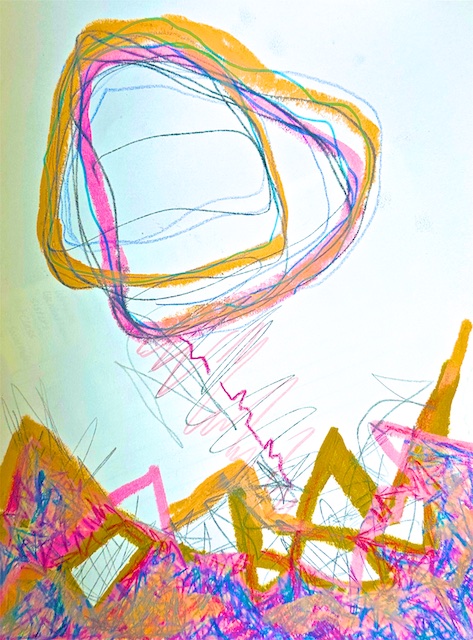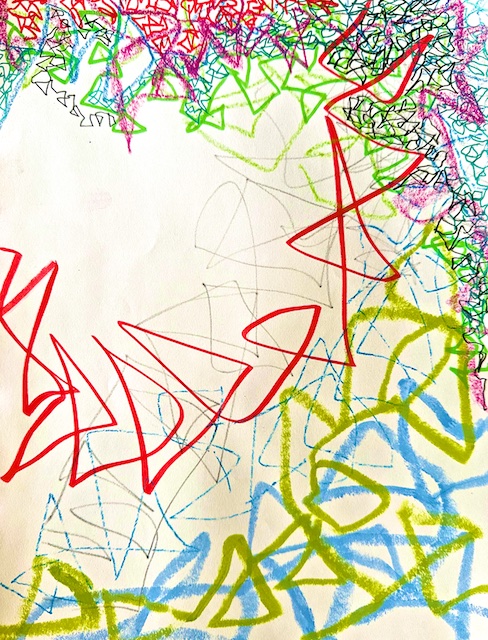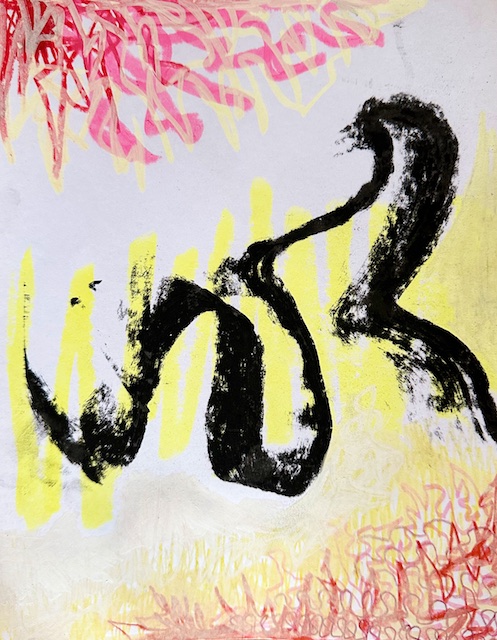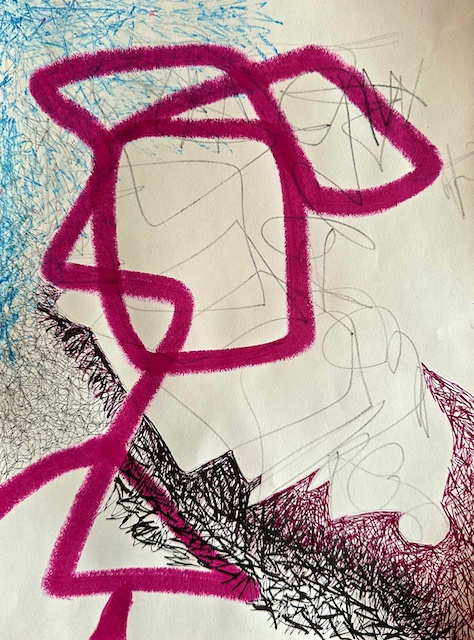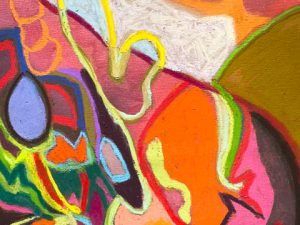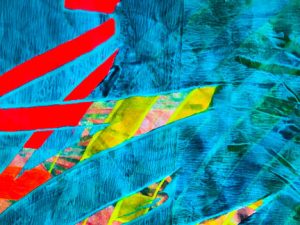Surprising as it seems, it is highly useful to practice scribbling and to know the idiosyncrasies of layering scribbles in different media. I layer scribbles all the time in my pastel work since it is a great way to build texture. Here, I’m warming up for a new season of studio work by doing some scribble studies. Some of these will live in my artist journals to remind me of what I learned, others will become collage papers.
Here are some helpful things to think about when exploring layering your own scribbles:
- pay attention to white space and utilize it in different amounts, places, and ways.
- change up the density and weight of line: tight scribbles vs, loose or airy scribble, big tools vs. small tools
- switch off to your non dominant hand (Those very triangley scribbles shown here are my non-dominant hand, where my dominant hand is more loopy or linear.)
- vary the speed of your mark, some fast, some slow
- use some controlled marks and some uncontrolled marks
- vary the scale: have some big marks and some small marks
- be conscious of different line quality: sharp edges vs soft, solid, fluid mark vs variegated or drier marks which hold miscellaneous gaps throughout, or faint marks that are barely noticable.
- try in general to combine scribbles of very different characteristics
- try holding the scribble implement in different ways, for example tight in your fist or loosely from the far back end of the marker or pencil
- Try erasing some marks or ghosting them out
- be mindful of values, have some darks, leave some lights
- mix up your materials: charcoal, graphite, crayons, markers and pens of different types and sizes, colored pencils, oil pastels, ink. How do they layer differently? Experiment with whatever you have.
- Try doing a transfer drawing by scribbling an oil pastel on a scrap page, and turning it upside down on your paper and scribble blind, pressing with the back end of a pen to transfer marks on the paper. Some of the fainter black or blue marks shown in these examples were done that way. It adds randomness because you can’t see what you are doing and those (especially done with my non-dominant hand) are my favorite marks here.
- Remain mindful; this is not about mindlessly doodling.
- scribble sheets make wonderful collage papers too, so play with cutting them up, and contrasting them with something different in a collage.
What you’ll find is various combinations of scribbles communicate different feelings that you can utilize when doing conceptual work. Some scribbles say frenzy and chaos, others speak of laconic idleness. Some seem like a tangled web, and others speak of networks or meandering paths.
This kind of work helps me build a visual vocabulary that I pull from to use in my finished artwork. Check out here how a scribble element represents thoughts in my painting Layers of Memory. Those marks are stylized from marks I frequently resort to with my right hand. In the paces I put myself through in the examples in this post, I’m starting to recognize default patterns my left hand resorts to (more triangular as mentioned above) so that is something I’ll put to use in future finished work.
Which do you like best? Will you give layering your scribbles a try? Everyone’s scribble is as different as their thumbprint. Give it a go!
3 Comments
-
I love these! What a blast!
-
I do, too, Sue!
Such Freedom
And Surprises
Emerge!
Taking my pens on a Trip!
Or Vice Versa!
A Blast, fer sher!;<)) Sue Krevitt
(Thanks, Polly, as always!)
Pingbacks
-
[…] was encouraged by the out pouring of interest in my Layered Scribble post the other day. I’m not the only one ready to do something easy and fun to jumpstart my […]
